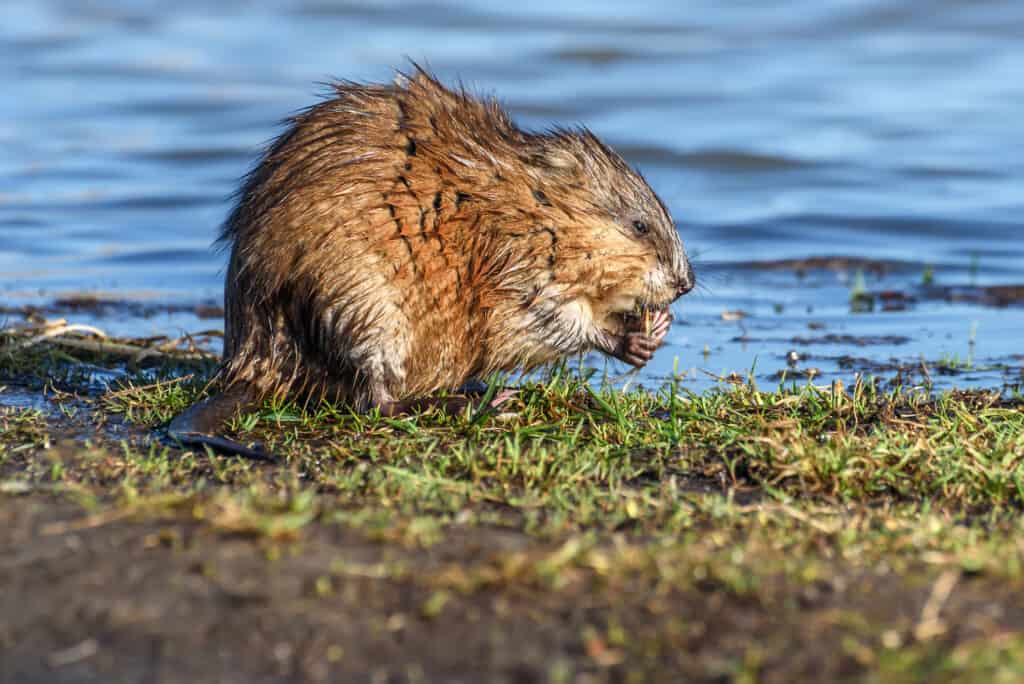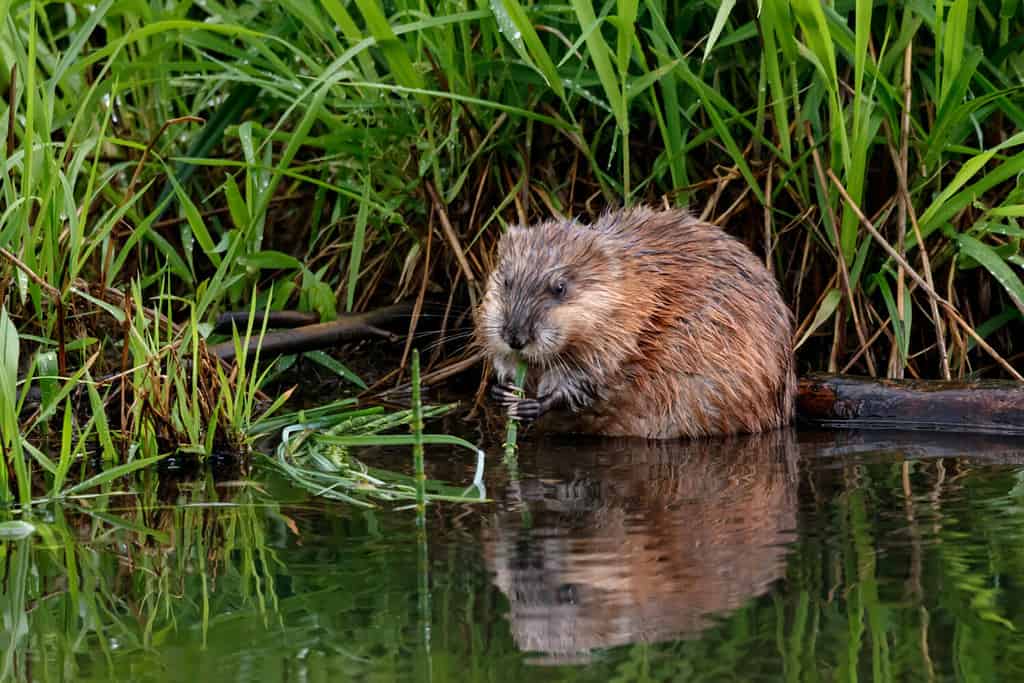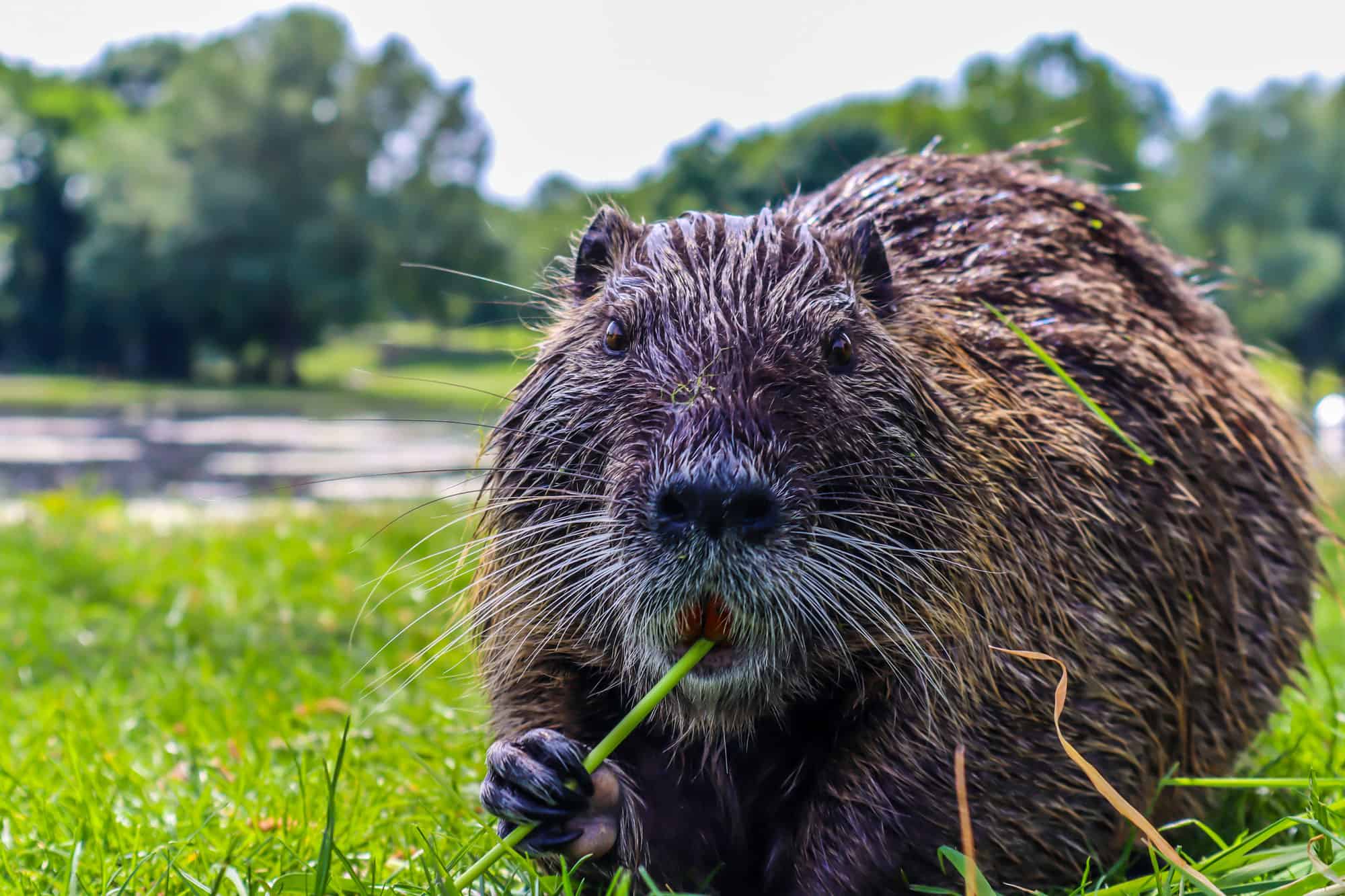The use of muskrat meat in the culinary world has many meanings. Some think the idea of eating a small rodent like the muskrat is unappetizing, but those who have a professional background or personal experience know that, when prepared correctly, the meat of this animal can be some of the most delicious. This special delicacy is one that goes back centuries in meaning and cultural significance, and to this day there are those who strongly appreciate this special meat. If you’re still a bit cautious, don’t worry- this article will fill you in on everything you need to know about muskrat meat. From its flavor profile to its origins, by the end, you’re sure to be adding the muskrat to your list of must-try meats.
What Does Muskrat Meat Taste Like?

The muskrat resides partially on land and partially in the water, and it has a unique flavor profile reflective of this.
©iStock.com/Iri_sha
The taste of muskrat meat is indescribable, a unique blend of several familiar and unfamiliar flavors and textures. Due to its semi-aquatic habitat, there are a number of woodsy, game-like flavors to the meat. Though it is entirely standalone, if one had to compare this meat to that of another animal it would either be rabbit or chicken. It is incredibly tender, and the best part about the incredible meat is its versatility. Depending on your preferences, you can infuse muskrat with any number of flavor combinations, and the meat will take them on fantastically.
The Best Muskrat Preparation Methods
There are a number of interesting ways to prepare this meat. All of those methods have a unique twist and charm, and these differences are usually dependent upon what region and group are preparing the meal. Before the cooking starts, some will opt to marinate the meat in a blend of herbs and spices for several hours, or even overnight. This process may be a bit tedious, but it is incredibly rewarding when it comes to the final flavor profile. Muskrat meat is best prepared with the help of a patient chef, as slow cooking will greatly help elevate the results. Because of this, there are a few options that remain the most popular.
The first is braising the meat, which helps to tenderize as it cooks. Smoking meat is also a method that has increased in popularity in recent times, as the flavor that comes with this preparation method enhances the notes already present in the cooked muskrat. You can even make yourself a delicious muskrat stew. Truly, the opportunities to turn this dish into something uniquely powerful are endless.
The Nutritional Benefits of Muskrat Meat

The meat of a muskrat is both great tasting and great for your physical health.
©Anton MirMar/Shutterstock.com
Muskrat meat might be delicious, but is it healthy for you? Luckily, there are several nutritional benefits that come from eating muskrats! For starters, it is a solid choice for lean protein, and it has high levels of iron. It also provides a source of B vitamins, which our body converts into precious energy. Essentially, the meat of a muskrat is similar to that of other small mammals, but it has some extra benefits thrown into the mix. That being said, be advised if someone is advertising the meat as exceptionally healthy or a ‘superfood.’ There is a deep and essential importance in the moderation of all foods, but muskrat meat can absolutely serve as a solid entree choice for any well-balanced meal.
Is Muskrat Meat Sanitary
Sometimes, people are hesitant to eat the meat of creatures that they perceive as unclean or unsanitary. But, contrary to these hesitations, muskrat meat is incredibly clean. Since muskrats are primarily land mammals, they don’t build up the same high levels of contaminants that, for instance, a seal would. They are also quite low on the food chain, preferring a plant-based diet, which means they aren’t consuming other creatures that may pass on contaminants. If that isn’t enough to convince you- they simply don’t live long enough to build up a substantial amount of contaminants. Most muskrats have a life span of 1-4 years, which means they are free of anything you wouldn’t want in your diet.
Places Where Muskrat Meat is Eaten

The origin of dining on this meat goes back centuries.
©Yuriy Balagula/Shutterstock.com
Muskrat meat is not common in all parts of the globe, but in North America, the history and culture of this cuisine run deep. The tradition of eating muskrats can be traced back to the continent’s indigenous groups, who often used this meat in their diets. Time may have passed since then, but that doesn’t mean that there aren’t still those who serve muskrats in their meals. The only difference is that what used to be a commonplace, routine meal has garnered a new sense of fanfare. There are religious individuals, for instance, who dine on muskrat meat during lenten times to gain additional protein while still consuming a semi-aquatic animal. Some particularly dedicated groups will hold yearly muskrat feasts, the common meat now flipped onto its head and considered a rare and desired delicacy.
Thank you for reading! Have some feedback for us? Contact the AZ Animals editorial team.








